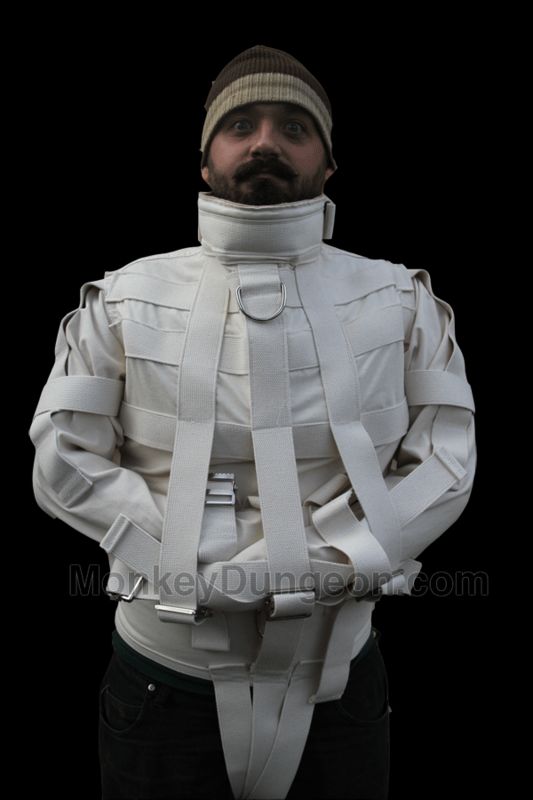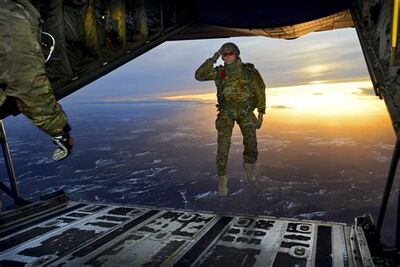Trump knows 9/11 was a false flag operation.
Jan 11, 2017 12:34:54 #
payne1000 wrote:
You have a serious ignorance problem which is . . . unfortunately . . . incurable.
The cleaners called. Your jacket is ready . They got all the drool stains out .

My final to you .

Jan 11, 2017 12:38:02 #
Jan 11, 2017 12:41:31 #
Jan 11, 2017 12:49:30 #
It's 'interesting'...
https://www.youtube.com/watch?v=xU4GdHLUHwU
https://www.youtube.com/watch?v=l0Q5eZhCPuc
https://www.youtube.com/watch?v=IYUYya6bPGw
https://www.youtube.com/watch?v=gfXecU3v-70
$2.3 Trillion missing. Buildings collapsing senselessly. I get the feeling I've been lied to.....
https://www.youtube.com/watch?v=xU4GdHLUHwU
https://www.youtube.com/watch?v=l0Q5eZhCPuc
https://www.youtube.com/watch?v=IYUYya6bPGw
https://www.youtube.com/watch?v=gfXecU3v-70
$2.3 Trillion missing. Buildings collapsing senselessly. I get the feeling I've been lied to.....
Jan 11, 2017 13:16:12 #
Larry the Legend wrote:
It's 'interesting'...
https://www.youtube.com/watch?v=xU4GdHLUHwU
https://www.youtube.com/watch?v=l0Q5eZhCPuc
https://www.youtube.com/watch?v=IYUYya6bPGw
https://www.youtube.com/watch?v=gfXecU3v-70
$2.3 Trillion missing. Buildings collapsing senselessly. I get the feeling I've been lied to.....
https://www.youtube.com/watch?v=xU4GdHLUHwU
https://www.youtube.com/watch?v=l0Q5eZhCPuc
https://www.youtube.com/watch?v=IYUYya6bPGw
https://www.youtube.com/watch?v=gfXecU3v-70
$2.3 Trillion missing. Buildings collapsing senselessly. I get the feeling I've been lied to.....
Larry, you're going to give emarine and Blade Runner a heart attack.
They've been religiously attempting to sell readers the lie that I'm the only one on this forum who believes 9/11 was a false flag event.
Now it's becoming obvious that there are others. Maybe now more members will speak out. This is not a battle of liberals vs. conservatives.
This is a battle of truth against lies.
The documentary linked second on your list has been viewed two and a half million times.
It's extremely effective in refuting the lies we've been told for 16 years now.
If everyone in the world viewed that documentary, the truth would finally be known.
The real perpetrators would have to face justice. The military/industrial complex would have no excuse for their permanent war on Muslims.
Jan 11, 2017 13:40:36 #
payne1000 wrote:
You wrote: "I have never argued Bush or the insider aspect with you..."
Okay, then let's argue the insider aspect.
Do you believe 19 Muslims hijacked the airliners and flew them into the towers and into the Pentagon?
If you do, you qualify as a conspiracy theorist because no proof for that theory has ever been provided.
Okay, then let's argue the insider aspect.
Do you believe 19 Muslims hijacked the airliners and flew them into the towers and into the Pentagon?
If you do, you qualify as a conspiracy theorist because no proof for that theory has ever been provided.
I see you've added an erroneous statement to your favorite picture. Kinetic energy and gravity are two different things. Gravity is one of the four fundamental forces that sustain the universe. Kinetic energy is mass in motion--the direction that mass moves is dependent on variables, gravity is only one possibility. IOW, gravity and explosives are not the only possible forces in releasing kinetic energy.
What we know about the 9/11 hijackers:
Exhaustive research reveals a factual history of the 19 terrorists: We have their names, birthdays, birthplaces, family history, education, religious convictions, marital status, when and why they joined Al Qaeda, who recruited them and when, who chose them for the suicide mission, where, when, and who trained them. We have their travel records, including flight bookings, US visas, financial records, who financed them and how the money was moved, including couriers and bank account records. We know where they stayed the night of September 10th, the airports where they boarded the flights on the morning of 9/11, and what flights they boarded.
What the 9/11 truth movement knows about who carried out the 9/11 attacks. Nothing. Speculation, wishful thinking, and lies. Truthers cannot provide any documented history of the conspiracy they have manufactured. Truthers have no names, much less anything else. about the conspirators who actually did the dirty deed.
What to read on al Qaeda and 9/11:
The literature on al Qaeda, and terrorism in general, exploded after the 9/11 attacks. Bin Laden’s life has received exhaustive scrutiny, as has al Qaeda’s history. Al Qaeda allies and affiliate groups, whose stories often proved integral to that of al Qaeda and have now emerged as threats on their own, are also receiving the attention they deserve. The best works, including those below, explain the complexity of al Qaeda and the broader jihadist movement it purports to lead. As these volumes make clear, bin Laden was a remarkable leader -- but the cause he champions suffers internal divisions and contradictions that have often led to bitter infighting and many mistakes.
Ghost Wars: The Secret History of the CIA, Afghanistan, and Bin Laden, From the Soviet Invasion to September 10, 2001. By Steve Coll. Penguin, 2004.
The Looming Tower: Al-Qaeda and the Road to 9/11. By Lawrence Wright. Vintage, 2007.
The 9/11 Commission Report: Final Report of the National Commission on Terrorist Attacks Upon the United States. By National Commission on Terrorist Attacks Upon the United States. W.W. Norton, 2004.
Begin here. These three works remain the classics that detail the rise of al Qaeda and the 9/11 attacks. All have an eye to the telling detail and remain exceptionally timely. Coll’s work describes not only the U.S. struggle against al Qaeda but also the broader U.S. approach to and missteps in Afghanistan and Pakistan in the years before 9/11. Wright tackles the same historical period but offers a different angle, focusing on the Arab side of the story, with masterful chapters on the roles of Egyptian jihadists and al Qaeda in Sudan. Both present the 9/11 story alongside lively accounts of al Qaeda’s rise, explaining how the plot went undetected despite the best efforts of so many people. The 9/11 Commission report provides impeccable sourcing and remains the definitive history of the 9/11 plot and the U.S. response. Although drier than Wright’s and Coll’s works, it, too, offers compelling narrative.
The Osama Bin Laden I Know: An Oral History of Al Qaeda's Leader. By Peter L. Bergen. Free Press, 2006.
The Longest War: The Enduring Conflict Between America and Al Qaeda. By Peter L. Bergen. Free Press, 2011.
In The Osama Bin Laden I Know, Bergen interviews many of bin Laden’s comrades-at-arms, childhood acquaintances, and others who had first-hand knowledge of the Saudi terrorist. Bergen took the unusual approach of letting those he interviewed speak for themselves, arranging the book topically and chronologically, rather than creating a single narrative. This approach makes for a harder read but allows the different views of bin Laden and al Qaeda’s history to shine forth, helping the reader understand the organization’s complexity. The Longest War also draws on these interviews and looks at al Qaeda after 9/11, but most of the text focuses on U.S. counterterrorism efforts after 9/11. Much of The Longest War is a blistering critique of U.S. interrogation abuses, the misuse of 9/11 to justify the war with Iraq, the under-resourcing of the U.S. campaign in Afghanistan, and other mistakes that have hindered or undermined the struggle against al Qaeda.
Cracks in the Foundation: Leadership Schisms in Al Qaeda From 1989-2006. Combating Terrorism Center, 2006.
One of the post-9/11 bureaucratic successes is the creation of the Combating Terrorism Center at West Point, whose superb analysts have focused much of their work on primary-source analysis of al Qaeda. Cracks in the Foundation uses al Qaeda documents captured in U.S. military operations to tell the organization’s story and explain its often bitter debates about ideology, strategy, and goals. As the title suggests, particular attention is paid to disagreements: the issues on which leaders differed and the paths al Qaeda took in its history that proved disastrous for the jihadist organization. As with Bergen’s The Osama Bin Laden I Know, this is not a straightforward narrative and is more for specialists, but it offers a nuanced and detailed look at the divisions in a movement too many outsiders think is unified.
Jihad in Saudi Arabia: Violence and Pan-Islamism Since 1979. By Thomas Hegghammer. Cambridge University Press, 2010.
Saudi Arabia is at the root of the modern jihadist movement. Hegghammer details the organizational and ideological origins of the Salafi-jihadist movement out of which al Qaeda sprang, describing the complex world of religious politics in the country during the 1970s and 1980s. This foundation is then used to explain the growth of al Qaeda and rival movements both inside and outside the kingdom. It culminates in a discussion of al Qaeda’s disastrous attempt to bring revolution to Saudi Arabia in 2003 and the successful Saudi counterterrorism campaign in the years that followed. Hegghammer’s scholarship is thorough and insightful, and his work is all the more remarkable because of the closed nature of Saudi society and the difficulties scholars have in gaining detailed information on social and political activities in the kingdom.
Brothers in Arms: The Story of Al-Qa'ida and the Arab Jihadists. By Camille Tawil. Saqi Books, 2011.
Drawing heavily on interviews, Tawil, an investigative journalist, explores jihadist groups in Algeria, Egypt, and Libya in the 1990s. All suffered defeat at the hands of the local regimes they opposed: some became disenchanted and renounced jihad, while others went global and joined al Qaeda. Many key al Qaeda leaders, including bin Laden’s heir apparent, Ayman al-Zawahiri, were seasoned in these struggles and bear the scars to this day. Tawil shows how the al Qaeda core operating from Afghanistan, Pakistan, and Sudan exploited local divisions and agendas and describes the frictions experienced by local groups when considering whether to work directly with bin Laden’s organization. Given the importance of al Qaeda affiliates, such as al Qaeda in Iraq and al Qaeda in the Arabian Peninsula, such knowledge is vital to understanding the future of the organization and its associated movements.
Osama Bin Laden. By Michael Scheuer. Oxford University Press, 2011.
Osama Bin Laden offers a detailed biography of the Saudi terrorist. Scheuer, the former head of the CIA’s bin Laden unit, offers a surprisingly sympathetic portrayal of the al Qaeda leader and convincingly demonstrates his importance in shaping the modern jihadist movement. Unlike Scheuer’s recent polemical works that blast U.S. policy, this book mostly focuses on bin Laden and his milieu. The author at times slips into policy critiques that are less convincing, and parts of the book read like inside baseball, because he spends considerable time criticizing other writers. But Osama Bin Laden is nuanced and insightful in its treatment of the late Saudi leader. I came away from reading the book thinking that al Qaeda will find it difficult or impossible to replace bin Laden with someone of similar stature.
The Search for Al Qaeda: Its Leadership, Ideology, and Future. By Bruce Riedel. Brookings Institution Press, 2010.
Riedel, a Brookings colleague, takes on al Qaeda’s history, both before and after 9/11, through biographies of four of its leaders: bin Laden; his deputy, Ayman al-Zawahiri; the Taliban leader Mullah Omar; and the dead Iraqi jihadist Abu Musab al-Zarqawi. These portraits are used to illustrate different aspects of the movement and, in contrast to many works on al Qaeda, offer many insights into jihadism in South Asia as well as the Arab world. Riedel offers a compelling case that al Qaeda successfully rebounded from its post-9/11 defeat in Afghanistan and the worldwide intelligence campaign against it and has reemerged as a major threat to the United States and its allies.
The History of Al Qaeda
Al Qaeda: A History; 9/11; and Today
Jan 11, 2017 13:50:09 #
Larry the Legend wrote:
What is it with you guys named "Larry"? Are all of you in a youtube bullshit fan club? Yeah, Larry, if you buy the crap uploaded to youtube by 9/11 conspiracy theorists, it is guaranteed you've been lied to.It's 'interesting'...
https//www.youtube.com/watch?v=xU4GdHLUHwU
https//www.youtube.com/watch?v=l0Q5eZhCPuc
https//www.youtube.com/watch?v=IYUYya6bPGw
https//www.youtube.com/watch?v=gfXecU3v-70
$2.3 Trillion missing. Buildings collapsing senselessly. I get the feeling I've been lied to.....
https//www.youtube.com/watch?v=xU4GdHLUHwU
https//www.youtube.com/watch?v=l0Q5eZhCPuc
https//www.youtube.com/watch?v=IYUYya6bPGw
https//www.youtube.com/watch?v=gfXecU3v-70
$2.3 Trillion missing. Buildings collapsing senselessly. I get the feeling I've been lied to.....
You put in your two cents here, you have change coming.
Jan 11, 2017 14:11:07 #
Blade_Runner wrote:
I see you've added an erroneous statement to your ... (show quote)
The kinetic energy you and the other anonymous shills have been attempting to sell on this forum is the straight down type caused by gravity and which is most common on earth. That type of gravity-induced kinetic energy is necessary to validate your false pile driver theory. The photos and videos reveal that all the weight of the upper sections has been ejected out into space before it reached the undamaged lower floors. The pile driver didn't exist.

Jan 11, 2017 14:15:55 #
Blade_Runner wrote:
What is it with you guys named "Larry"? Are all of you in a youtube bullshit fan club? Yeah, Larry, if you buy the crap uploaded to youtube by 9/11 conspiracy theorists, it is guaranteed you've been lied to.
You put in your two cents here, you have change coming.
You put in your two cents here, you have change coming.
BR, you still don't understand that by defending the Bush Administration conspiracy theory, you are revealing yourself to be a 9/11 conspiracy theorist.
The problem for you is that you are tasked with defending the most unbelievable conspiracy theory ever devised by man.
https://www.youtube.com/watch?v=yuC_4mGTs98
Jan 11, 2017 14:21:02 #
Blade_Runner wrote:
I see you've added an erroneous statement to your ... (show quote)
Since you are promoting Michael Scheuer as a reliable source, you may want to hear what he says about your homeland . . .
https://www.youtube.com/watch?v=LMbHB8PnXA8
and this . . . https://www.youtube.com/watch?v=XHl1JnQoIWQ
Jan 11, 2017 14:27:49 #
payne1000 wrote:
People enjoy fantasy movies. Alice in Wonderland has been viewed 500 million times.Larry, you're going to give emarine and Blade Runn... (show quote)
Jan 11, 2017 14:31:42 #
payne1000 wrote:
WTF are you babbling about now? The photos and videos reveal no such thing. Only a scientific dunce could produce such a load of shit.The kinetic energy you and the other anonymous shills have been attempting to sell on this forum is the straight down type caused by gravity and which is most common on earth. That type of gravity-induced kinetic energy is necessary to validate your false pile driver theory. The photos and videos reveal that all the weight of the upper sections has been ejected out into space before it reached the undamaged lower floors. The pile driver didn't exist.
Jan 11, 2017 14:32:24 #
Blade_Runner wrote:
People enjoy fantasy movies. Alice in Wonderland has been viewed 500 million times.
Many people do like to live in fantasy land.
That's why so many believe the 9/11 conspiracy theory you are selling.
The real world is just too scary for them to contemplate.
Jan 11, 2017 14:36:25 #
Blade_Runner wrote:
WTF are you babbling about now? The photos and videos reveal no such thing. Only a scientific dunce could produce such a load of shit.
Take another look. Try to find a pile driver which could crush the undamaged lower floors of the North Tower.
Be sure not to notice the sequenced explosions which travel down the tower at 2/3rds free fall speed.
https://www.youtube.com/watch?v=nUDoGuLpirc
Jan 11, 2017 14:48:24 #
payne1000 wrote:
You're full of shit, payne, you've always been full of shit and you always will be. Your continuous attempts at projection are as transparent as air. Many people do like to live in fantasy land.
That's why so many believe the 9/11 conspiracy theory you are selling.
The real world is just too scary for them to contemplate.
That's why so many believe the 9/11 conspiracy theory you are selling.
The real world is just too scary for them to contemplate.
I'm not selling anything, idiot, I am simply providing the scientific and historical reality of the 9/11 attacks.
If you want to reply, then register here. Registration is free and your account is created instantly, so you can post right away.


